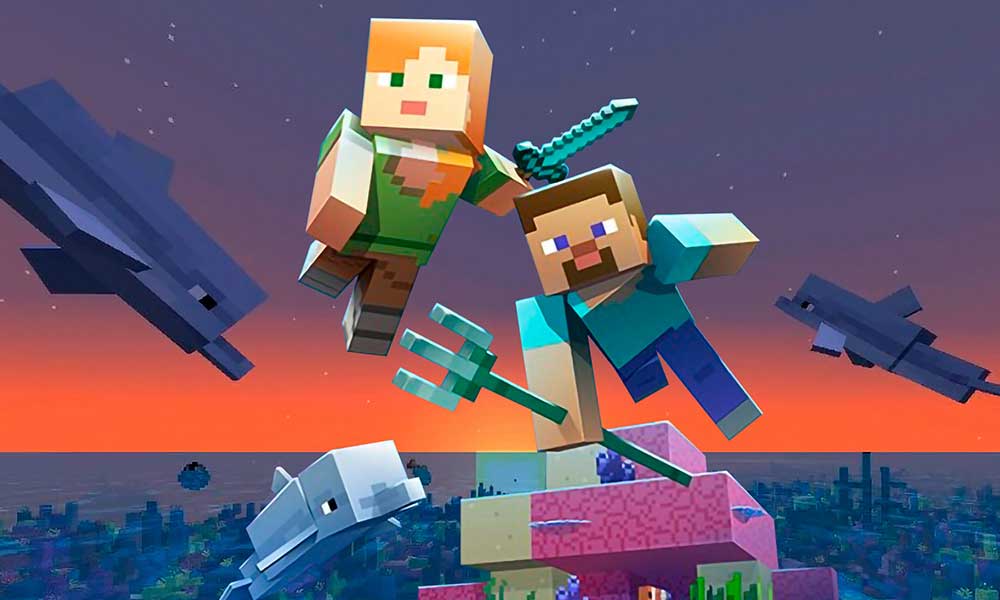Minecraft is a sandbox video game that has been developed by Mojang Studios and is one of the popular open-world titles that’s ruling the game industry for years. Although Mojang releases multiple patch updates for the Minecraft game periodically to fix multiple issues or server-related errors, it seems that plenty of players are currently facing the Minecraft Server Java Version Errors on the PC while trying to launch the game.
Mojang did release Minecraft v1.16 and then v1.17 a couple of months ago that also updated the Java version 16 or 17 that you’ll need to run the game properly. Now, if you haven’t installed or updated your Java version on your system then make sure to follow this article to download and install the latest version of the Java version on your PC. In this way, you can properly set up your Minecraft server apart from some other possible workarounds to fix errors.
Also Read
Fix: Minecraft Stuck on Loading Screen
Fix: Minecraft lags on Nintendo Switch After An Update
Fix: Minecraft Stuttering, Lags, or Freezing constantly
20 Best Minecraft Building Ideas 2022
Fix: Minecraft We Were Unable to Verify What Products You Own Error
How to Cancel Minecraft Realms Subscription
Best Minecraft Prison Servers (February 2023)
Fix: Minecraft “You Need To Authenticate to Microsoft Services” Error
How to Fix You Are Not White-Listed on This Server! Error on Minecraft
Minecraft Villager Not Restocking: What’s The Reason?
Fix: Internet Exception java.net.SocketException Connection Reset

Page Contents
Fix: Minecraft Server Java Version Errors
So, without wasting any more time, let’s jump into the guide below.
1. Grab the latest Java Edition
Visit this link to download the Java 17 version on your PC and then install it as usual to fix the issue. To do so:
- Once you downloaded the standard installer package file, run it as administrator.
- From the Java Setup wizard window, click on Next > Click on Next again.
- Once done, click on Close to exit the window.
You’ve now successfully installed or updated the Java version on your Windows. You should be able to open the Minecraft server from now on. However, if this method didn’t work for you, try following another method below.
2. Uninstall Older Java Versions
Sometimes uninstalling the older version of Java on your Windows computer most probably help you to resolve the errors with the Minecraft server running. To do so:
- Make sure to click on the Start menu > Type Control Panel.
- Click on it from search results > Click on Uninstall a program.
- Now, you’ll be able to find out the older version of Java that has been installed on the system.
- If you find out the older Java version depending on the edition or the installed date filter then just click on the older version.
- Click on Uninstall and follow the on-screen prompts to complete the removal process.
- Once the older Java version has been uninstalled, make sure to reboot the system to apply changes.
3. Find other Java versions to uninstall
If none of the above methods worked for you then make sure to find out other Java versions on your Windows computer to uninstall. To do this:
- Click on the Start menu > Type cmd.
- Now, you’ll find out Command Prompt > Simply right-click on it.
- Select Run as administrator and click on Yes (if prompted by UAC) to proceed.
- Then make sure to copy & paste the following command line inside the Command Prompt window and hit Enter:
java --version
- It’ll show you the current version of Java that has been installed on your computer right now.
- If it shows any outdated Java version like Java 16 or older that means your Windows system is basically pointing out to a wrong version of Java on this PC. You can easily find out and uninstall the older version by following the steps below:
- Open File Explorer > Head over to the C:\ drive where you’ve installed the Windows system and the Java version.
- Search for java.exe on the C:\ drive > Here you’ll see a bunch of Java versions that have been already installed on your PC.
- Except for the latest Java version, make sure to uninstall or delete the rest of the previous version of the Java edition on the computer.
That’s it, guys. We hope this guide was helpful to you. For additional queries, you can comment below.
